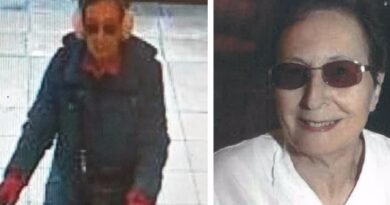The Disappearance of Suzanne G. Lyall in Albany New York
The mysterious disappearance of Suzanne G. Lyall on March 2, 1998, remains one of the most baffling missing persons cases in the United States. A 19-year-old college student attending the State University of New York (SUNY) at Albany, Suzanne vanished without a trace after leaving work at a local mall. Despite decades of investigation, multiple theories, and national media attention, Suzanne’s fate remains unknown. This article delves into the events surrounding her disappearance, the investigation that followed, and the enduring impact on her family and the community.
Who Was Suzanne G. Lyall?
Suzanne “Suzy” Lyall was a bright and determined computer science major with a passion for technology and programming. Born on April 6, 1978, Suzanne grew up in Ballston Spa, New York, a town just north of Albany. Described as quiet and introverted, Suzanne was a creative thinker with a deep love for computers. Friends and family knew her as dependable, thoughtful, and focused on her studies and personal projects.
Suzanne was living on campus at SUNY Albany and was in her sophomore year when she went missing. In addition to her academic workload, she worked part-time at Babbage’s, a computer software store located at the Crossgates Mall in Albany. She was known to be responsible, with a steady routine and no history of unusual behavior that might have indicated she was planning to disappear.
The Day Suzanne Disappeared
March 2, 1998, was an ordinary day for Suzanne. She attended her classes at SUNY Albany before heading to her part-time job at Babbage’s. She left work at around 9:20 PM, catching a Capital District Transportation Authority (CDTA) bus bound for her campus dormitory. Witnesses on the bus reported seeing Suzanne, and she was last seen getting off the bus at Collins Circle, a bus stop on the SUNY Albany campus, around 9:45 PM.
After stepping off the bus, Suzanne vanished without a trace. She never returned to her dorm, and no one saw her after that moment. Her boyfriend, Richard Condon, attempted to call her that night, but his calls went unanswered. The following day, when Suzanne failed to show up for work or classes, her friends and family knew something was wrong.
The Initial Investigation and Search Efforts
When Suzanne was reported missing, law enforcement immediately began investigating. The New York State Police, SUNY Albany campus police, and the FBI became involved in the case. Initial searches of the campus, including the area around Collins Circle, yielded no signs of Suzanne. Investigators questioned her friends, family, and co-workers, but no one had any information that could explain her sudden disappearance.
One of the most perplexing aspects of the case was that Suzanne seemed to have disappeared in a relatively well-traveled and safe area of campus. The Collins Circle bus stop was used by many students, and it was unusual for someone to go missing from that spot without anyone noticing. Investigators scoured the campus and surrounding areas, but no significant leads emerged.
Key Evidence in the Case
As investigators dug deeper into Suzanne’s case, they uncovered a few pieces of evidence, though none led to concrete answers.
- ATM Activity: Two days after Suzanne disappeared, her ATM card was used at a local Stewart’s convenience store. The transaction showed that someone had withdrawn $20 from her account. Surveillance footage at the store did not show who had used the card, and the PIN number entered was correct, indicating that the person using the card either knew Suzanne’s PIN or was Suzanne herself. However, there has been no confirmation that it was Suzanne who used the card, leaving investigators puzzled.
- Suzanne’s Personal Belongings: A small personal item of Suzanne’s—a Babbage’s name tag—was later found near the bus stop at Collins Circle. The discovery was troubling, as it suggested that Suzanne may have dropped it or had been in distress before disappearing. However, this clue did not provide any further leads.
- Phone Records and Emails: Investigators also reviewed Suzanne’s phone records and emails. There was no unusual activity in the days leading up to her disappearance, and nothing pointed to a planned departure. Her relationship with her boyfriend was stable, and she had not expressed any concerns or fears to friends or family that might explain her disappearance.
Theories About Suzanne’s Disappearance
Over the years, several theories have been proposed about what could have happened to Suzanne G. Lyall. However, despite years of investigation, none of these theories have been definitively proven.
- Abduction by a Stranger: One of the most widely considered theories is that Suzanne was abducted by a stranger after she got off the bus at Collins Circle. Given that it was late at night, she could have been vulnerable, and an opportunistic attacker may have taken her by force. The fact that her ATM card was used shortly after her disappearance raises the possibility that her abductor might have coerced her into giving up her PIN number before harming her. Unfortunately, there is no evidence, such as witness sightings or physical clues, to support this theory definitively.
- Foul Play by Someone Close to Her: Another theory is that Suzanne may have encountered foul play from someone she knew. While her boyfriend and close friends were cooperative with investigators and no evidence pointed directly at them, investigators could not completely rule out the possibility. This theory has largely been discounted over time due to the lack of any suspicious behavior from her close contacts.
- Voluntary Disappearance: A less likely theory is that Suzanne chose to disappear of her own accord. However, her family has strongly refuted this idea, citing her close ties to her family, her committed relationship, and her dedication to her studies as reasons why she would never have left voluntarily. Furthermore, she did not take any personal belongings that would suggest she was planning to start a new life elsewhere.
The Role of Suzanne’s Family in Keeping Her Case Alive
Suzanne’s parents, Mary and Doug Lyall, have been tireless advocates in the search for their daughter. In the years following her disappearance, they established the Center for Hope, a nonprofit organization dedicated to helping families of missing persons and advocating for legislative changes to improve how missing persons cases are handled.
The Lyalls have worked with lawmakers to pass Suzanne’s Law, a federal law that requires law enforcement to notify the National Crime Information Center (NCIC) when a person between the ages of 18 and 21 is reported missing. This law closes the gap that previously existed when young adults were treated as legal adults and not subject to the same protocols as minors when they went missing.
The Lyall family continues to hold out hope that new leads will emerge and that they will one day find out what happened to their daughter. Their persistence has kept Suzanne’s case in the public eye and maintained pressure on law enforcement to continue investigating.
Law Enforcement’s Efforts to Solve the Case
The investigation into Suzanne’s disappearance remains active, though it has grown cold over the years. Detectives have revisited the case periodically, and new technological advances in forensic science have provided hope that new clues may be uncovered. However, despite periodic updates and continued efforts, no breakthrough has occurred.
In 2015, the FBI announced a $25,000 reward for information leading to the arrest and conviction of anyone responsible for Suzanne’s disappearance. The case is still considered a missing persons case, though foul play has not been ruled out. Over the years, tips have come in from across the country, but none have led to the discovery of Suzanne or any new evidence.
The Broader Impact of Suzanne’s Case
Suzanne G. Lyall’s disappearance has had a profound impact on her family, friends, and the Albany community. Her case has also had a lasting effect on how missing persons cases are handled across the United States, particularly when it comes to young adults. Suzanne’s Law has helped improve the process for investigating missing persons cases involving individuals between the ages of 18 and 21, and her parents’ advocacy has provided hope and support for countless other families facing the same uncertainty.
The case has also raised awareness about the challenges law enforcement faces when investigating missing persons cases. Despite advances in technology and investigative methods, cases like Suzanne’s illustrate how easily someone can disappear without a trace, and how difficult it can be to find answers even with the best efforts of law enforcement.
Conclusion
More than 25 years after Suzanne G. Lyall’s disappearance, the case remains unsolved. Despite tireless efforts from her family, law enforcement, and the broader community, there are still no clear answers about what happened to Suzanne that night in 1998. Her family continues to search for answers, hoping that one day, the mystery will be solved and they will find closure.
For now, Suzanne’s case remains one of the most haunting unsolved mysteries in New York State, a reminder of how fragile life can be and how easily someone can slip away without a trace.
Discover more from City Towner
Subscribe to get the latest posts sent to your email.




